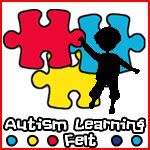1. Africa to the United States
2. Slavery to emancipation
3. Rural and southern areas to urban and northern areas
4. Negative to positive social status
5. Negative to positive self image” (p. 180)
Color, cultural discontinuity and slavery are three transitional factors from Africa to the United States. Many African Americans who “look White” are often treated better in American society. The darker the skin color or tone, the more likely they will have unfair interactions in our society. This sadly is a reality when it comes to educational, economic and employment opportunities.
Many African Americans experienced cultural discontinuity. Eshelman & Bulcroft(2006) state “The system of behavior that was socially learned and shared by members of African society was not applicable to the social conditions they faced in the United States. It is perhaps difficult if not impossible find any other group who came or were brought to the United States and faced such a description of cultural pattern” (p. 180). Thus the term African American arose as many of the “African cultural patterns” were held together.
The history of slavery continues to be an issue of controversy today. Researchers Eshelman & Bulcroft (2006) note that many researchers believe that the lack of a husband and wife, two parent home and the disruption in the Black family life have a connection to the history of slavery. It is believed that more families remained intact during slavery and the mothers were and still are the authority figures due to the high mortality rates in Black men. Many of these women with children had difficulty remarrying. Too often mother and father relationships were only symbolically and loosely held together. The men typically congregated together going place to place searching for work. After the emancipation, many of the freed slaves were left without resources for survival and therefore remained tenants, sometimes unpaid to the former owners.
From Negative to Positive Social Status:
According to Eshelman & Bulcroft (2006), African Americans consistently been viewed by society and by Daniel Patrick Moynihan as a weakened society with deteriorating families in low socioeconomic level. Research shows that the Moynihan Report was incorrect as the recent gains for African American men and women in employment, income opportunities and education have increased in recent years. Research has often failed to discuss the African American middle class. The middle class African American household is typically headed by a dual parent family unit with stable marriages and white collar or educational jobs. Males typically have “a high school education or better and occupy positions in business, government, or education. These families have more similarities than differences to the overriding white family form that society has created in the United States.
For more societal issues, you may also be interested in Land Rights and Cultural Differences in Pacific Northwest History
Make reading time enjoyable with your child with Athlyn Green's The Bed Bug That
Wouldn't Bite


 RSS Feed
RSS Feed Twitter
Twitter














1 comments:
Interesting facts, I enjoy learning something new on your blog.
Post a Comment